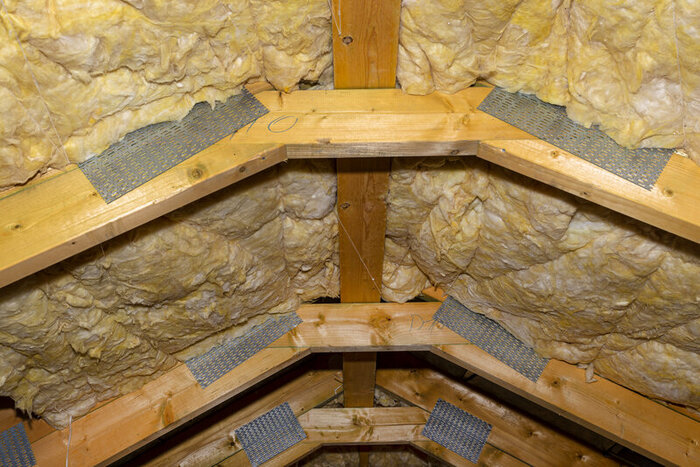
Attic baffles are one part of an attic ventilation system. They’re used in combination with exterior soffit vents to ensure air flows freely between the insulation and the vents. This reduces the build-up of moisture and combination that negatively impacts whole-home comfort and energy efficiency.
Also called rafter vents or insulation stops, baffles should be included in every roof and attic design. They’re a critical part of attic ventilation.
Without adequate attic ventilation, a roof and attic can’t do the job they’re designed to do. Households lacking healthy attic airflow experience:
Scheduling an attic inspection is the best way to identify whether your home has functioning attic baffles. However, if you’re comfortable getting up and into your attic, you may be able to see whether or not you have baffles - and their condition.
The energy.gov website describes baffles as:
…2-inch-deep chutes made of plastic, cardboard, or metal. They are usually 2 to 4 feet in length and come in widths to fit standard rafter bays...The baffle maintains a 2-inch air gap between the underside of the roof deck and the insulation and guides air from the soffit vents toward the ridge vent.
Depending on the age of your home and the contractor’s preference, baffles may also be made from PVC, aluminum, or plastic. When you’re up in your attic, look along the attic ceilings. Your baffles would be on the ceiling, between the rafters, where the attic ceiling meets the attic floor. They come in different colors, but the most common are tan, blue, and pink.
These vents work by creating a two-inch channel or chute that promotes airflow. The air comes in through intake vents. These vents are typically covered with a mesh that allows air to flow in but prevents entry from rodents, pests, and other airborne debris.
Attic vents allow cool air in, while exhaust vents allow hot air to escape. This combination of thermodynamic play keeps air circulating through the baffles and around the attic. The fresh, cooler air cycles through the home. The stale, warmer air is then vented back out again.
This continued, regulated airflow provides multiple benefits:
There is a fine line between adequate air sealing and ventilation. Too much airflow in the form of leaks, and you have temperature control issues. Not enough fresh air in the home means condensation has no way to evaporate, and off-gassing and other interior toxins build up in the home, compromising indoor air quality.
In addition to creating uncomfortable humidity levels, moisture control issues put your Bay Area attic at risk for mold and mildew infestations. Not only are mold and mildew spores unhealthy, but moldy walls, ceilings, or floors create an unpleasant “musty” smell and eventually lead to structural rot.
Your HVAC system depends on the thermostat for stops and starts. Poor air circulation leads to fluctuations in temperature and humidity levels, and that causes more frequent HVAC cycling. Most American homes spend more than 50% of their utility bills on heating and cooling, so the more you can do to insulate the home, and support that with adequate ventilation, the lower the annual utility spending will be.
Along those same lines, the more the HVAC runs - especially if it’s constantly cycling on/off - the more wear and tear there is on the parts. This leads to higher repair and replacement costs. Your HVAC is a good communicator. The more it runs, the more likely it is that your home has attic or insulation issues, which could include upgrading insulation, attic baffles, or that attic baffles or other vents are blocked and need to be cleaned.
Most people don’t realize that the air inside their home is likely to be far more toxic than the “polluted air” outside. This is because improper air sealing and insulation doesn’t provide the right balance of stale air out and fresh air in. For example, mold or mildew build-up can increase respiratory distress or illness for home occupants.
Also, remember that if you use the attic as a storage space or have an attached garage, toxic fumes released from things like paint, paint thinners, pest control poisons, etc., make their way into your home. Your soffit vents are a big part of diluting toxic air and moving it out of the home.
Not sure whether or not your attic baffles are doing their job? Or do you have an older home and suspect the baffles need to be replaced or repaired? Contact Attic Solutions online or give us a phone call at (510) 500-5007. We’ll give your attic the once over and let you know the status of your soffit vents, insulation, and other attic features so you know whether or not improvements are in order.